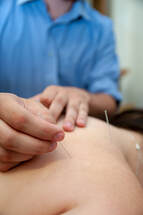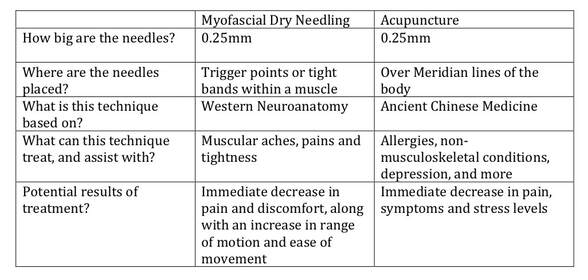A little about our Myotherapist – Brendon…
He has completed further training for Myofascial Dry Needling, Cupping & Taping, with a strong passion in the application of taping for sport, function, and prevention. He has a special interest in lower limb conditions, postural dysfunction and pain. He hopes to continue to offer his specialised care to ChiroCure Clinic patients.
Dry Needling Vs Acupuncture
What is the difference between Dry Needling and Acupuncture?
Acupuncture was found over 5300 years ago, by the ancient Chinese. This form of treatment was and currently is used to treat several medical pathologies and conditions, including: allergies, nervous and respiratory issues, and gastrointestinal disorders. Practitioners subtly and gently insert needles into specific acupuncture spots over the body, to treat the patients specific complaint. These specific spots are found along the meridian lines of the body. Acupuncture is more focused toward relaxation, with treatment lasting between 15-30 minutes.
In the early 1930’s a Doctor named John Kellgren (Rheumatologist), noticed that a distinct pain referral pattern was produced when injecting a saline substance into the muscle. Due to the pressure of the needle, pain was found to be relieved. Later in the decade, Dr Janet Travell, who was a Cardiologist, started studying Dr Kellgren’s work, and particularly questioned the use of saline. Dr Travell removed the saline from the injection, and still found that pain within the muscles was removed, reduced and relieved, thus ‘Dry Needling’ therapy was born.
Dry Needling has since had more research and practice, with a fine specific application now being used. Needles are inserted into taut bands (tightness) of muscular tissue and trigger points. Depending on how quickly the muscles positively respond, needles stay in each muscle for up to 10 minutes at any given time. Treatment with dry needling can require between 30-60 minutes, depending on how many muscle groups are being targeted and how large the area of pain or dysfunction.
Dry needling compliments Chiropractic Adjustments and is very effective when releasing muscles that do no release completely after a chiropractic treatment.


